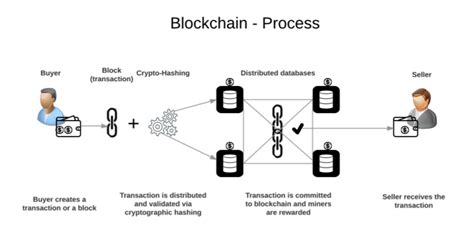Title: “Revolutionizing Trust in Blockchain Transactions with Advanced AI Models”
Introduction
Blockchain technology has made great strides in recent years, revolutionizing the way we conduct transactions and store data. However, one of the major challenges with blockchain is ensuring the trustworthiness of transactions. Traditional methods such as cryptography and signatures can be prone to errors and security flaws that can compromise the security and integrity of the network. To address this problem, AI models have emerged as a promising solution to increase trust in blockchain transactions.
Problem:
Blockchain transactions are complex and involve multiple parties, making it difficult to verify their authenticity and identify potential threats. Traditional methods rely on cryptographic keys and signatures that can be susceptible to manipulation or forgery. This not only undermines the security of the network but also undermines trust among stakeholders.
AI Models to Increase Trust:
Artificial intelligence (AI) models have been developed to address this problem by analyzing blockchain transactions in real time, identifying patterns and anomalies that could indicate malicious behavior. These models can:
- Analyze transaction data: AI algorithms can process massive amounts of transaction data, detecting suspicious patterns and inconsistencies that could compromise the network.
- Identify key players: Machine learning models can identify key players involved in transactions, such as nodes or validators, to ensure their legitimacy and detect potential manipulation.
- Detect patterns and anomalies: Advanced AI techniques can analyze transaction data to identify unusual behaviors, such as repeated transfers or suspicious patterns that could indicate fraudulent activity.
- Behavior prediction: AI models can predict the likelihood of a transaction being safe or malicious, enabling proactive threat mitigations.
Types of AI models:
Several types of AI models have been developed to increase trust in blockchain transactions:
- Machine learning (ML) algorithms: ML models learn from patterns and data, allowing them to identify complex relationships and anomalies.
- Deep learning (DL) techniques: DL algorithms use neural networks to analyze large amounts of transaction data, detecting subtle patterns and features that may indicate malicious behavior.
- Natural language processing (NLP): NLP models can analyze text-based transaction data, identifying potential threats and suspicious language patterns.
Case Studies:
Several organizations have successfully implemented AI models to increase trust in blockchain transactions:
- IBM Blockchain Trust: IBM’s AI-powered blockchain platform leverages ML algorithms to detect anomalies and predict behaviors, ensuring secure transactions.
- Dell Financial Services: Dell leveraged DL techniques to analyze transaction data, identifying suspicious patterns that led to the implementation of a robust security framework.
Benefits:
Integrating AI models to increase trust in blockchain transactions offers numerous benefits:
- Enhanced Security: Advanced machine learning algorithms and models can detect vulnerabilities and anomalies, ensuring secure transactions.
- Increased Efficiency: AI-powered analytics reduce manual effort, enabling faster decision-making and more effective risk management.
- Improved Trust: By detecting suspicious activity and predicting potential threats, AI models strengthen trust among stakeholders.
Conclusion:

Integrating AI models to enhance trust in blockchain transactions is a promising solution to ensure network security and integrity.
